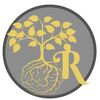A Permaculture Design Certificate has at its heart a design project where you apply the theory from the topics explored to the detailed design of a system you intend to create. The most common permaculture design project is a food-production system that expresses how the inter-connection of compatible elements can create a balanced, fertile and productive system. However, this same concept can be applied to other types of systems – such as a life plan, business or social project. The key to a permaculture design is that the design of the system results in regenerative outcomes – where the elements interact in ways that improve the health and resiliency of that system over time.
This design project involves the following components that are embedded as design tasks within the course.
This design project involves the following components that are embedded as design tasks within the course.
- Introduction: Here you introduce the context of your design project, perform a self-analysis of your own strengths and personality traits and identify the needs of the end-user.
- Background: This section summarises your exploration of the intention of permaculture design and translates that into a working interpretation that can guide your design.
- Site Analysis: Involves assessing the dynamics relevant to the context of your design that may include a description of the soil, topography, climate, socio-political factors, previous land uses and market forces.
- Base Maps: Before starting the design of your system it pays to capture good base maps that act as a template to explore different design possibilities. These base maps should reflect existing features on the site, contour, access, different zones of production and wet areas.
- Sector Analysis: This map expresses the energies that impact upon your site, showing the direction and angle of sun, direction of wind, impact of noise, good views etc. These factors will impact the design of your site.
- Concept Sketches: Using a simplified base map, come up with a number of different design possibilities – exploring different ways production systems within different zones can interact to recycle resources and nutrients and make best use of on-site resources and sources of fertility.
- Final Plan: This is a working plan for the development of your system. It reflects the best way the ideas explored within your concept sketches can interact to best effect to create a balanced and regenerative system.
- Description: Here you capture how you have attempted to apply your interpretation of permaculture to the design of your system and explain the different elements of the system you have created.
- Implementation: Lastly, you explain how you can make best use of successional changes in the development of your system, manage finances and other resources and slowly develop your system over time. Part of this process is your method for capturing observations of changes within the system - so that you can make suitable adjustments to your design.
For Further details follow the links below
Examples
|
|
| ||||||
|
|
|
|
|
|

